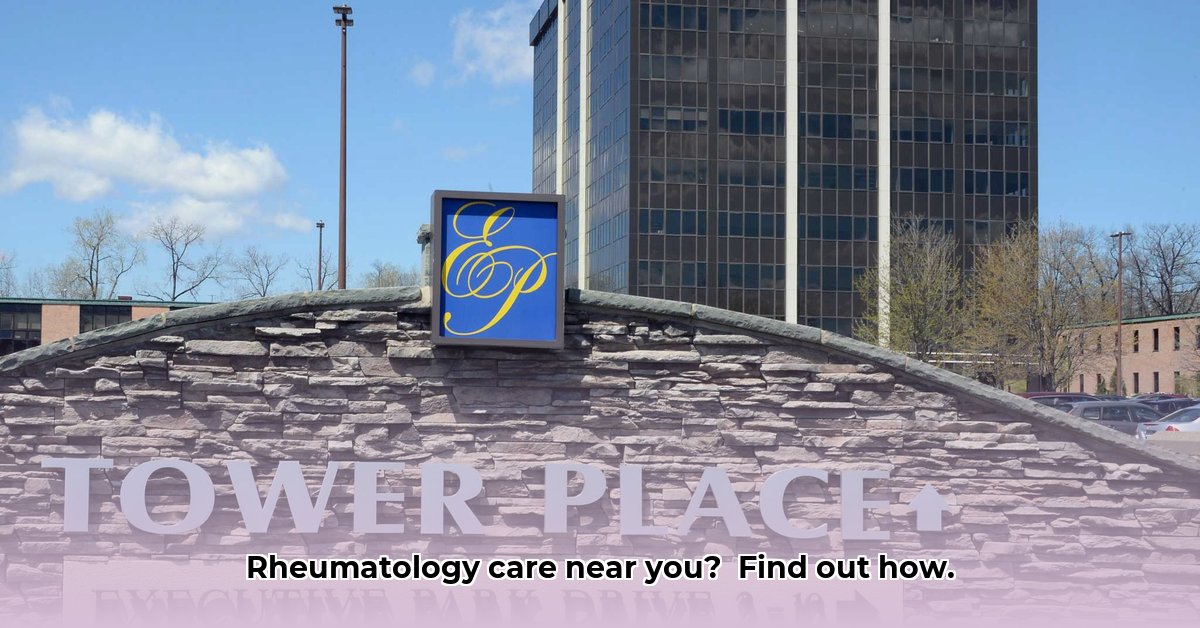
Navigating the Labyrinth: Access to Rheumatology Care in Albany, NY
Imagine a sharp, persistent pain that limits your daily life. You need a rheumatologist, but finding one feels insurmountable. This is the reality for many seeking rheumatology care in Albany, NY, particularly around 4 Tower Pl, 12203. This article examines the accessibility of rheumatology services in this area, highlighting data gaps and proposing solutions to improve care access. We will build a narrative around a hypothetical patient's journey, illustrating the challenges and the need for systemic change.
Let's meet Sarah, a 50-year-old Albany resident experiencing debilitating joint pain. Her search for a rheumatologist begins with an online search, leading her to the Center for Rheumatology's new location at 4 Tower Pl. While this expansion is a positive step, Sarah's experience reveals the broader challenges present.
The Center for Rheumatology: A Promising Start, But Is It Enough?
The Center for Rheumatology's expansion to 4 Tower Pl represents a significant addition to rheumatology services in the Capital Region. Yet, the question remains: how effectively does this new location address the existing access gap? This is where the narrative intersects with the crucial lack of readily available data.
Data Gaps: The Silent Obstacle to Better Care
Sarah's story highlights a critical issue: the lack of comprehensive data on rheumatology access in Albany. We lack crucial information, including wait times, patient demographics, and overall clinic capacity, hampering our ability to fully assess the efficacy of existing services. It's like trying to navigate a city without a map: we know buildings exist, but we don't know how to reach them efficiently, or if they're even equipped to handle the demand. This data deficit makes it impossible to definitively answer the question: "Is rheumatology care truly accessible in this area?".
Beyond Geographic Proximity: Systemic Barriers to Care
Even with a clinic nearby, access to care is far from guaranteed. Sarah faces several potential hurdles: long wait times for appointments, the cost of care, insurance coverage, and the challenges of traveling to the clinic, particularly if she has limited mobility due to her condition. These systemic barriers affect not just Sarah, but countless individuals within the community. How can we ensure that rheumatology care doesn't remain a privilege, but a right?
A Roadmap to Improved Access: Actionable Steps
Addressing the current situation requires a comprehensive, multi-pronged approach, focusing on data collection, improved coordination, and policy changes. We propose the following recommendations:
Short-Term Goals (Next 1-2 Years):
Comprehensive Data Collection: The Center for Rheumatology, and other relevant providers, should implement robust data collection systems, tracking patient demographics, wait times, appointment frequency, and patient satisfaction. This data will provide essential insights into the efficacy of their services and identify underserved communities.
Inter-Provider Collaboration: Improved communication and information sharing between healthcare providers and organizations in the Capital Region would streamline patient referrals, reduce wait times, and foster a more efficient system for accessing rheumatology care.
Targeted Policy Interventions: Local and state agencies should leverage existing health data to pinpoint underserved areas and allocate resources accordingly. This could involve funding for community health centers, subsidies for transportation, or initiatives supporting affordable health insurance options.
Long-Term Vision (3-5 Years and beyond):
Innovative Service Delivery: The Center for Rheumatology should explore telehealth options to expand their reach and offer care to those living in rural areas or facing mobility challenges. This could significantly reduce geographical barriers to access.
Workforce Development: Incentivize rheumatologists and related specialists to practice in underserved areas, including offering loan repayment programs or other financial incentives.
Addressing Social Determinants of Health: Recognizing that access to care isn't solely geographical, we need to consider social determinants of health (e.g., transportation, insurance, food security), implementing strategies to mitigate these barriers.
The Path Forward: A Collaborative Effort
The journey toward equitable access to rheumatology care is a collaborative endeavor, demanding the concerted efforts of healthcare providers, policymakers, and the community. By prioritizing data-driven decision-making, investing in innovative service delivery models, and addressing social determinants of health, we can transform Sarah's experience—and the experiences of many—from one of frustration and hardship to one of hope and healing. The goal? To ensure that quality rheumatology care is a right, not a privilege, for every resident of the Capital Region.